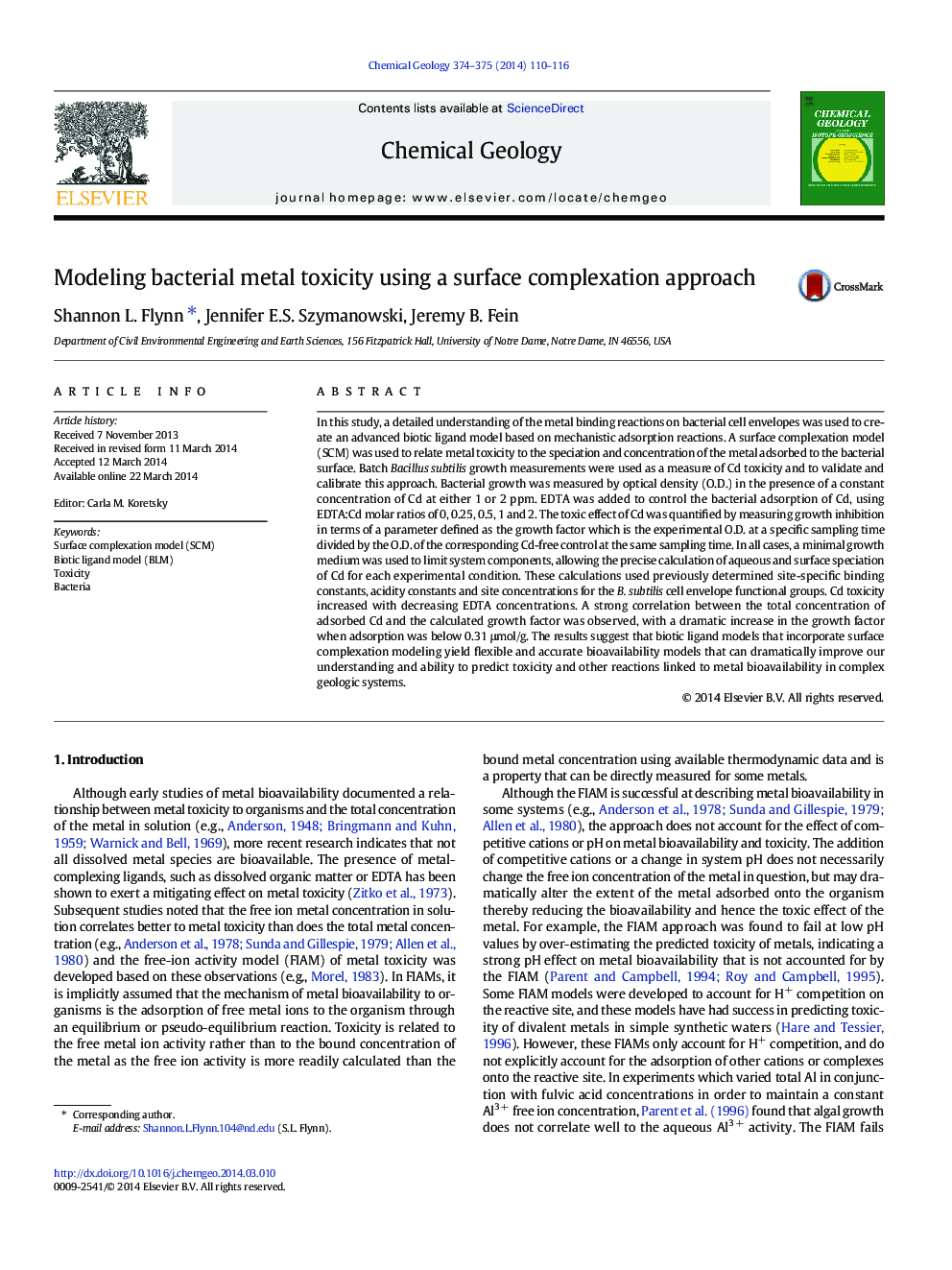| کد مقاله | کد نشریه | سال انتشار | مقاله انگلیسی | نسخه تمام متن |
|---|---|---|---|---|
| 4698797 | 1637596 | 2014 | 7 صفحه PDF | دانلود رایگان |
• A surface complexation approach was used create an advanced biotic ligand model.
• Adsorbed Cd concentration correlated with the calculated growth factor.
• The calculated growth factor increased when Cd adsorption was below 0.31 μmol/g.
• Results indicate that SCMs yield flexible and accurate bioavailability models.
In this study, a detailed understanding of the metal binding reactions on bacterial cell envelopes was used to create an advanced biotic ligand model based on mechanistic adsorption reactions. A surface complexation model (SCM) was used to relate metal toxicity to the speciation and concentration of the metal adsorbed to the bacterial surface. Batch Bacillus subtilis growth measurements were used as a measure of Cd toxicity and to validate and calibrate this approach. Bacterial growth was measured by optical density (O.D.) in the presence of a constant concentration of Cd at either 1 or 2 ppm. EDTA was added to control the bacterial adsorption of Cd, using EDTA:Cd molar ratios of 0, 0.25, 0.5, 1 and 2. The toxic effect of Cd was quantified by measuring growth inhibition in terms of a parameter defined as the growth factor which is the experimental O.D. at a specific sampling time divided by the O.D. of the corresponding Cd-free control at the same sampling time. In all cases, a minimal growth medium was used to limit system components, allowing the precise calculation of aqueous and surface speciation of Cd for each experimental condition. These calculations used previously determined site-specific binding constants, acidity constants and site concentrations for the B. subtilis cell envelope functional groups. Cd toxicity increased with decreasing EDTA concentrations. A strong correlation between the total concentration of adsorbed Cd and the calculated growth factor was observed, with a dramatic increase in the growth factor when adsorption was below 0.31 μmol/g. The results suggest that biotic ligand models that incorporate surface complexation modeling yield flexible and accurate bioavailability models that can dramatically improve our understanding and ability to predict toxicity and other reactions linked to metal bioavailability in complex geologic systems.
Journal: Chemical Geology - Volumes 374–375, 26 May 2014, Pages 110–116
